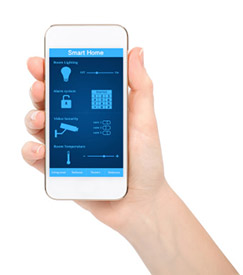Improve Preventative Maintenance with Smart Building Technologies and Wearable Devices
 Every year, multifamily building owners spend thousands of dollars replacing floors ruined by condensation from heating, ventilation, and air conditioning (HVAC) systems that aren’t working properly. And every year, multifamily building owners spend thousands of dollars repairing or replacing HVAC and other building systems that suddenly fail. Smart building technologies, such as smart meters, smart sensors, and wireless HVAC systems, can help multifamily building owners avoid such costly repairs and replacements. We call these cost-cutting devices, “Wearables for Buildings,” similar to the emerging “wearable” market for people with smart watches (iWatch) and smart glasses (Google glass).
Every year, multifamily building owners spend thousands of dollars replacing floors ruined by condensation from heating, ventilation, and air conditioning (HVAC) systems that aren’t working properly. And every year, multifamily building owners spend thousands of dollars repairing or replacing HVAC and other building systems that suddenly fail. Smart building technologies, such as smart meters, smart sensors, and wireless HVAC systems, can help multifamily building owners avoid such costly repairs and replacements. We call these cost-cutting devices, “Wearables for Buildings,” similar to the emerging “wearable” market for people with smart watches (iWatch) and smart glasses (Google glass).
Early warning of maintenance issues
Smart building technologies are well known for their ability to dynamically manage a building’s energy demands in order to reduce energy usage and costs. However, they can do much more than that. Smart building technologies can also detect and notify owners about problems before widespread damage occurs. For example, water sensors that communicate with a wireless mobile app can inform building owners about water damage from a clogged HVAC condensation line before the damage becomes excessive.
Even more impressive is that smart building technologies offer powerful fault-detection capabilities that can improve the preventive maintenance of a building’s HVAC system, thereby averting unexpected mechanical system failures. Here’s how it works:
- Load-monitoring sensors provide information about the amount of electricity the HVAC system is using and the efficiency of its different components.
- Sensor data that show a significant change in power consumption for any part of the system (e.g., a component starts using 2 kilowatts instead of the normal 1.5 kW) can indicate a problem that needs attention.
- Fault detection, made possible by smart monitoring, preempts the failure, saving building owners potentially thousands of dollars in major repairs or new equipment purchases.
ETS and Lowe’s collaborate on smart building tech
Smart building technologies’ usefulness doesn’t stop there. For example, ETS and Lowe’s recently developed a new cutting-edge smart building technology: a wireless packaged terminal air conditioner (PTAC). ETS discovered that many multifamily properties and hotels in New York and New Jersey have manually controlled air conditioners, with no central unit to manage them. Some don’t even have a thermostat. As a result, the air conditioning is often left running, even when the rooms aren’t occupied, which not only wastes energy but also can cause water damage from condensation. So ETS proposed the idea of a wireless PTAC to Lowe’s. In response, Lowe’s worked with Electrolux to develop a PTAC that can be controlled remotely by a wireless mobile app.
This cutting-edge technology was recently showcased in a fully outfitted smart apartment in one of ETS’s Fast Trak contracted buildings in New York City. ETS and Lowe’s also showcased other smart building technologies, including a smart water sensor with a wireless valve. If the water sensor goes off, the valve in the kitchen sink will automatically shut off the water. In addition to finding out about the leak or other water problem, the apartment takes action to minimize the damage, without the owner or tenant being there.
As a building owner, you can reap big savings by investing in smart technologies. By using such technologies to cut electricity costs and provide powerful fault detection to improve preventive maintenance, you multiply the value of your energy technology investment and enhance your building’s bottom line.
[cta]Want to make your building energy efficient but don’t know where to start? ETS can help! Contact us to learn more about how our FastTrak program can set you on the path to energy savings.[/cta]

